I have a pandas dataframe of the following form:
id n_items paid
1 5 1
1 2 0
1 6 0
1 1 1
1 3 0
1 8 0
2 7 0
2 7 1
3 1 1
3 5 1
3 2 1
'id' specifies a customer ID, 'n_items' tells how many items have been bought during a particular transaction, and 'paid' tells if the customer has paid for that purchase. For every customer ID the rows are chronological.
For every row, I want to determine how many items have been purchased in total since the customer has last paid. The output should look like this:
id n_items paid cum_days
1 5 1 5
1 2 0 2
1 6 0 8
1 1 1 9
1 3 0 3
1 8 0 11
2 7 0 7
2 7 1 14
3 1 1 1
3 5 1 5
3 2 1 2
I have found this post, which addresses a similar question, but I haven't managed modifying it for this purpose.
